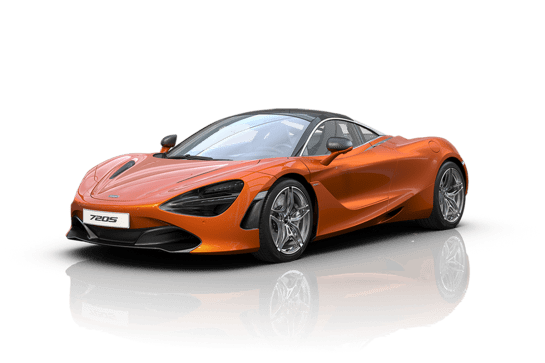
Maserati Granturismo VS Porsche 718
Maserati Granturismo
Likes
- Beauty: of course
- Brawn: more than expected
- Brains: tech that enhances comfort
Dislikes
- Supercar expensive
- Australian tax system that makes it that way
- A more generous warranty please
Porsche 718
Likes
- Fantastic engine
- Sharp driving dynamics
- Muscular, purposeful looks
Dislikes
- Complex roof system
- Not as liveable as a regular 718
- Might be the last petrol-powered 718
Summary
Maserati Granturismo
How much would you pay for an outstandingly beautiful grand touring coupe with supercar performance?
Costing as much as a one-bedroom inner-city flat, the new-from-the-ground-up Maserati GranTurismo possesses seductive styling. When you’re chasing the exquisite Porsche 911 Carrera 4S and Bentley Continental GT, you need every asset available, and then some.
Which brings us to the 2024 second-generation (M189) range.
Adding to a stunning back-catalogue of gorgeous Maseratis that stretches back even further than either of its opponents above, does the latest GranTurismo have the brains as well as the brawn to match its stunning beauty?
Let’s dive right in.
| Safety rating | — |
|---|---|
| Engine Type | 3.0L turbo |
| Fuel Type | — |
| Fuel Efficiency | —L/100km |
| Seating | 2 seats |
Porsche 718
“If this is to be our end, then I would have them make such an end as to be worthy of remembrance.”
King Theoden may have been talking about the men and women of Rohan in The Lord of the Rings, but he could have just as easily been talking about the team behind the Porsche 718 Boxster.
It’s been nearly 30 years (yes, that long) since the Boxster joined the Porsche line-up as the more affordable sports car alternative to the 911, but now it’s facing a dramatic change that will make it a very different beast.
Read more about
Porsche has committed to an electric future for the 718 but before it does so, there was one more petrol-powered version to create, this one, the 718 Spyder RS. It stands to be the final 718 to have an internal combustion engine, but could also be the best.
The 718 Spyder RS is the Boxster version of the previously released Cayman-based GT4 RS. So it takes every element of the sports car and turns it up to 11. This is faster, more powerful, lighter and more dynamic than the Boxster has ever been.
| Safety rating | — |
|---|---|
| Engine Type | 4.0L |
| Fuel Type | Premium Unleaded Petrol |
| Fuel Efficiency | 12.9L/100km |
| Seating | 2 seats |
Verdict
Maserati Granturismo8/10
There’s a famous line in a Hollywood movie that somebody’s ego is writing cheques their body can’t cash.
In the GranTurismo’s case, its agility, performance, ride, handling and overall refinement means it absolutely delivers on the promise of the stunning styling.
Of course, this review is a first taster only, even if it is on one of the most challenging race circuits we know. And, as such, we cannot wait to finally drive the GranTurismo outside on Australian public roads.
Which, by the way, will be all the more beautiful because of it.
Porsche 7187.4/10
If this is to be the end of the 718 as we know it, then it is an end to be remembered. Porsche has produced something special in the Spyder RS, a sports car that can compete with the 911 on any stretch of road - which is something so few cars can claim. The focus on performance has driven the entire concept of the car, but all the elements work in harmony, with form and function coming together.
Design
Maserati Granturismo10/10
With a long bonnet and centralised, cab-backward silhouette, the new GranTurismo is built on a highly-modified version of the Stellantis Group’s Giorgio platform, which debuted with the BMW 3 Series-sized Alfa Romeo Giulia sedan back in 2016 and also underpins the Stelvio SUV.
In this application, it has been redesigned as a modular architecture to accommodate, among other things, electrification. The resulting Folgore (Lightning) electric vehicle version will arrive in Australia during 2025.
Compared to before, the design is all-new, with a body that is slightly longer and wider than before; it features over 65 per cent aluminium, weight distribution is 52/48 per cent up front/rear, and the aerodynamics are honed to maximise efficiency, especially for the Folgore. The latter’s drag coefficiency of 0.26 – 0.02 better than the Modena/Trofeo.
Here are the key dimensions: 4959mm long (+78mm), 1957mm wide (+42mm), 1353mm tall (same as before) and 2929mm wheelbase (-20mm).
Maserati claims it invented the grand tourer with its post-war A6 1500 coupe of 1947. Since then, a variety of timeless designs have been released, with beauty always being the priority… and the GranTurismo nails it.
Porsche 7189/10
As the pinnacle of not only the current 718 range, but potentially the entire combustion engine era of the Boxster, Porsche has pulled out all the stops for the Spyder RS.
This includes major changes to the design, but none are purely for aesthetic reasons and instead are driven by the search for performance; and the fact they make the 718 look tougher, meaner and more purposeful than ever before is just a bonus.
It’s a comprehensive redesign that starts at the bumper with a new front lip spoiler to enhance downforce. Then there’s a pair of NACA ducts on the lightweight bonnet to improve brake cooling without compromising aerodynamic drag. The lightweight front fenders include wheel arch vents to stop any potential for front-end lift at high speeds.
And the fenders aren’t the only component that’s gone on a diet, there’s a lighter exhaust, lighter wheels, lighter bonnet, lighter roof, lighter door panels and even lighter carpets on the inside. All up, the Spyder RS tips the scales at 1400kg, which is 40kg lighter than a standard 718 Boxster.
If it’s still not light enough, you can opt for the optional 'Weissach Package' (which was fitted to our test car), which brings even lighter 20-inch forged magnesium wheels and carbon-fibre reinforced plastic for a range of parts including the front luggage compartment, rollover bars and ducktail spoiler on the Gurney flap – plus some cosmetic enhancements.
And we still haven’t even touched on the biggest design change yet - the rear half of the car. Starting with the roof, which Porsche actually calls a ‘sunshield’ and ‘weather guard’ because it’s a stripped down version of what the brand usually uses, to save weight and let the glorious engine noise into the cabin uninterrupted.
But it’s also necessary because the entire rear engine cover has been redesigned to accommodate the larger engine that Porsche has installed in the Spyder RS, a 4.0-litre six-cylinder instead of the usual turbocharged four-cylinder ‘boxer’ engines.
While the Spyder RS looks great with the roof/sunshield on or off, frankly the removal process is much too complicated and requires repeated viewings of a YouTube tutorial to still get it wrong.
While owners will (likely) eventually get the hang of it, it will always be a clunky and awkward process and that’s just the price of being so focused on performance, which you can accept or not.
Inside that ethos of performance over practicality continues, with sports seats, an Alcantara-wrapped steering wheel and even the previously mentioned lightweight carpet floor mats.
It’s a purposeful, rather than luxurious, cabin, but that perfectly suits the nature of the Spyder RS. Our test drive included several long stretches behind the wheel and at no stage did it feel uncomfortable or impractical, despite its stripped-down design.
Practicality
Maserati Granturismo7/10
Long, low and wide. These are prerequisite proportions for a traditional grand touring 2+2 coupe, and with them come traditional packaging compromises.
With a near 3.0-metre wheelbase, there’s tonnes of room for legs, shoulders and even heads if you’re willing to sit nice and low, though the lush ambience is more cosy than coastal because of the accompanying broad centre console.
The dual central screens look like an open tablet, and it’s perfectly sized and easy to use. Same goes for much of the controls, while the driving position is, thankfully, first class. Just like the fit and finish.
Beating Mitsubishi’s TR Magna to the punch by decades, there’s an analogue clock perched above the centre vent outlets, which is digitalised and contains performance telemetry as per Porsche’s equivalent.
Vision is a little limited by the fat pillars and upswept window line but the big screens help. Storage is okay, and access to the rear is only for the very young, very fit or very limber.
Two more seats out back provide snug comfort, but the GranTurismo really is all about the ones up front. Overall, the cabin design’s restrained modernity matches the exterior’s styling philosophy down to a tee.
Further back, the boot lid opens electrically because why not, revealing 310 litres of cargo space. The rear seat doesn’t fold, but there is a ski-hatch into the cabin for broomsticks and some such.
Speaking of flying high, let’s take a look at the other side of the GranTurismo.
Porsche 7186/10
One area where the 718 range is starting to show its age quite dramatically is the in-car technology. While Porsche’s native system is relatively user-friendly, the lack of wireless Apple CarPlay or Android Auto in any capacity is deeply out-dated; and was frustrating for this Android using reviewer.
Given the age of the current 718 platform, and the impending arrival of the new model, it’s understandable that the multimedia system didn’t get an overhaul, but for a $350K car it does feel a bit behind the times.
In practical terms the Spyder RS is a bit of a struggle if you plan to go away with it. We managed to get a small suitcase and backpack in the under bonnet storage, but that was at capacity. While the addition of the larger engine removes any meaningful rear storage space.
Price and features
Maserati Granturismo8/10
Beauty like this does not come cheap. What Italian supercar does?
The Modena is the base grade, kicking off from an Australian luxury-tax addled $375,000, before on-road costs, while there’s also the top-of-the-line Trofeo, from $450,000.
This puts the GranTurismo smack-bang in the middle of several other high-end 2+2 sports coupes besides the 911 and Conti GT, such as the Aston Martin Vantage, BMW M8 Competition and Mercedes-AMG GT.
Clearly, privilege brings the luxury of variety.
Now, as you’d probably expect, the GranTurismo is a pretty lavishly presented and equipped proposition.
Yet it’s the sheer modernity of the Torinese icon that might catch you by surprise – until you learn there’s also a cutting-edge and completely electric Folgore version also coming to Australia sometime mid-next year.
There’s a sense of that thinking with a pair of sizeable digital display screens – one ahead of the driver and a 12.3-inch touchscreen to the centre, sat above a smaller, 8.8-inch climate control display like an open tablet.
You’ll also find sumptuous leather, a 360-degree camera view, a head-up display, a digital rear-view mirror, high-end premium audio with 14 speakers and an Android-based multimedia set-up offering Alexa assistance, ‘Hey, Maserati’ voice-control and even a Wi-Fi hotspot.
It’s the repurposing of the traditional analogue clock perched up on top of the dash as both an analogue-look timepiece and performance telemetry screen that best juxtaposes the classic with the contemporary.
That, and the long list of adaptive driver-assist safety systems, which will be spelled out in more detail in the safety section below, as well as the standard air suspension and adaptive dampers. All underline the GranTurismo’s security, luxury and comfort yang to its supercar-performance yin.
Still, regardless of how many more features or more performance the Maserati’s competitors may have over it, the GranTurismo possesses one luxury no other quite manages as naturally and that’s supermodel looks.
Porsche 7188/10
The bad news is, the Spyder RS costs just over $200,000 more than the entry-level 718 Boxster, which is not a small sum of money. The good news is, for that $200K, Porsche has overhauled the 718 from nose-to-tail and enhanced it in nearly every aspect.
There’s a raft of mechanical changes that we’ll get to later on, to help justify the $334,200, plus on-road costs, asking price, but from a specification perspective there are some notable inclusions.
For starters it comes with the 'Porsche Communication Management' (PCM) multimedia system, which includes in-built navigation and Bluetooth connectivity, as well as a 110-watt sound system.
But Australian delivered cars get an even higher level of standard equipment than other countries, with LED headlights including 'Porsche Dynamic Light System' (PDLS), cruise control, digital radio, rear 'ParkAssist' with reversing camera, 'Light Design Package', tyre fit set and windscreen with grey top tint, plus a no-cost optional Bose Surround Sound System all included.
It may be $200K more than 718 but compared to a 911, it actually makes a pretty compelling value argument. A 911 Cabriolet Carrera S starts at $342,700 (plus on-road costs), making that Spyder RS $8500 cheaper and a genuine alternative to its ‘big brother’.
Then, when you compare it against similar mid-engine European sports cars, such as the Maserati MC20 (from $510,000) or McLaren Artura (from $477,310) the Porsche looks like a bargain; relatively speaking, of course.
Under the bonnet
Maserati Granturismo9/10
So, no more Ferrari-sourced V8, eh?
Yet, it’s not just a sexy body that Maserati has mastered, because this particular 2992cc 3.0L twin-turbo V6 is pretty-much exactly the same engine as you’ll find in the company’s MC20 supercar, give or take a bunch of outputs.
Called the Nettuno, it isn’t quite in the performance league of the GT’s mid-engined two-seater sibling, but with 365kW of power and 600Nm of torque in the Modena and 45kW/50Nm more in the Trofeo, it’s a spine-tingling symphony of speed and total jailbait… especially given the latter’s 320km/h maximum velocity.
That’s 18km/h quicker than the standard tune, and the Trofeo also shaves 0.4 seconds off the 0-100km/h sprint time at just 3.5s flat.
Either engine, though, feels terrifically quick and smooth and no doubt that’s aided by what must be one of the world’s greatest automatic transmissions in the eight-speed ZF unit. It sends drive to all four wheels.
Given the length, girth and opulence, a kerb weight of just 1795kg is outstanding, allowing a power-to-weight ratio of 203kW per tonne in the Modena and a knockout 228kW/tonne in the Trofeo.
To help keep all that in check, the GranTurismo also deploys double wishbones up front, a multi-link independent rear suspension set-up, along with the aforementioned air suspension – which is a nice nod to history as French carmaker Citroen used to own Maserati.
Anyway, the active suspension works in tandem with the four self-explanatory driving models fitted – 'Comfort', the default 'GT', 'Sport' and 'Corsa' (track).
Porsche 7189/10
The key stat for the engine is the cylinder count. Gone are the four cylinders and instead it’s a return to Porsche’s iconic flat-six.
Specifically, the same 4.0-litre six that Porsche uses in its 911 GT3, which is a lot of engine to squeeze into the middle of this lightened sports convertible.
In order to keep the 718 in its place (beneath the 911), Porsche has slightly detuned the engine, so it makes 368kW/450Nm (compared to 375kW/460Nm in the 911 GT3), but the German brand has never worried about a kilowatt contest and instead prefers to focus on driveability and the other elements that make a drive great.
To that end the combination of air-intakes next to the headrests and the lightweight stainless steel exhaust (which gets titanium tips on the Weissach Package) helps the Spyder RS sound like a Carrera Cup racing car when you really wind it up to its 9000rpm redline.
Not that the performance isn’t spectacular, though, with Porsche claiming it takes the Spyder RS just 3.4 seconds to run 0-100km/h, only 10.9 seconds to get from 0-200km/h and will hit a top speed of 308km/h.
The engine is paired to a seven-speed dual-clutch auto transmission (or PDK in Porsche-speak) that the company claims has “short-ratios”, but with peak power not hitting until 8400rpm and peak torque from 6750rpm, you don’t have to rush the ratio changes.
Efficiency
Maserati Granturismo8/10
You know, for a super coupe that can easily exceed 300km/h, the GranTurismo is pleasingly efficient, with a combined cycle average figure of 10.2L/100km.
Top that 70L tank with premium unleaded petrol, and you might even average over 680km between refills if you can restrain yourself from poking the bear under the bonnet.
How? Clean aero efficiency, along with that predominantly aluminium body that helps keep the weight down to under an impressive 1.8 tonnes.
Which all bodes really well for 2025’s Folgore EV version, which can also hit 100 in 2.7s on the way to 325km/h. Bring that on!
Porsche 7187/10
Porsche says the 4.0-litre engine in the Spyder RS uses 13.0L/100km, which is a big number for what is a relatively small car. But that engine is highly-tuned and built for performance not efficiency, so it’s something owners will need to accept.
Our test drive included some long highway stretches, as well as some spirited driving and urban commuting, so a good mix across all conditions, and we saw consistent returns around the 15-16L/100km range.
It has a 64-litre tank, which means a theoretical driving range of around 490km, assuming you can hit the official claim.
Driving
Maserati Granturismo9/10
Though it has been modified by what may be an almost unrecognisable amount by Maserati’s engineers, using Stellantis’ Gorgio architecture that first appeared in the magnetic Alfa Romeo Giulia of 2016 and then utterly seduced in the flagship Quadrifoglio version is a great place to start.
Now, we’ve only tested the all-new GranTurismo (GT from here on in) coupe around the fast and challenging Tailem Bend race track near Adelaide, so cannot speak of its behaviour on Australian public roads.
But what we experienced was an incredible and elevating sports car experience. And, yes, that's despite the loss of the magnetic Ferrari-based 4.7-litre V8.
Even with ‘just’ 365kW of power and 600Nm of torque, the base Modena twin-turbo V6 thunders off the line, its superb ZF eight-speed automatic transmission, surely the best of its type in the world, shifting with lightning speed through the ratios as it blitzed past 100, then 150, then 200km/h in mere seconds. Maserati says within 8.8s, in fact.
To help keep all that in check, the GranTurismo deploys double wishbones up front, a multi-link independent rear suspension set-up, along with the aforementioned air suspension – which is a nice nod to history as French carmaker Citroen used to own Maserati.
Anyway, the active suspension works in tandem with the four self-explanatory driving models fitted – 'Comfort', the default 'GT', 'Sport' and 'Corsa' (track).
We were too thrilled to notice whether the loss of the Maserati V8 grumble, because the exhaust howl was exciting enough, along with the sheer ease in which the GT accelerates.
And when we needed to suddenly brake reaching corners that seemed stupidly close until we realised they weren’t, we also were relieved at the Modena’s marvellously effective Brembo brake package.
Now, at under 1900kg, the GT is still a heavy car, but not for a five-by-two metre-long-and-wide 2+2 seater coupe.
Seriously, the cohesion and crispness of the steering, whether in Comfort or three-settings down in shockingly heavier Corsa mode, tingles the senses, seeming far lighter and more agile than the (albeit lithe) luxury coupe styling suggests.
Not Porsche 911 supernatural-alacrity, but beautifully quick and reactive nonetheless. It’s such a buzz.
There’s also a sense of isolation from the air suspension underneath, aided by the trick adaptive dampers doing their bit too to cushion the ride. The vital luxury part of the GT equation is omnipresent in the Maserati coupe.
And this was all just in the Modena. Another few laps in the Trofeo just sharpened the senses and speed and responses, supercharging the experience around Tailem Bend.
What all this left us is a longing for more time behind the wheel. Which hopefully will happen soon, but for now, this is far-and-away the best Maserati I have ever driven. If you can afford one, this is all great news.
Of course, back in the real world on everyday roads, there will surely be criticisms, but for now, around the circuit, the GranTurismo is something very special indeed.
Porsche 7189/10
I’m only giving it a nine out of 10 because perfection is hard for any car to achieve, but the 718 Spyder RS goes as close as any car I’ve driven. This is a masterpiece of modern sports car design, pushing the 718 closer to the 911 than ever before, which is something Porsche has clearly tried to avoid so as to not tarnish the image of its flagship.
But with the 911’s 4.0-litre flat-six in the middle of the 718, plus its more compact dimensions, the lightweight nature of the Spyder RS and the raft of chassis and handling enhancements, this really does leave you questioning ‘do I really need a 911?’
The steering is fantastically direct, the chassis responds to every input with precision and feedback and the braking is strong and consistent. Which helps because that engine is so good it launches you with ferocity and a glorious noise (as good as anything on the market today) whenever you squeeze down on the accelerator.
The highest praise I can give the Spyder RS is not that it was a dream to drive on winding, challenging roads, but that it was just as enjoyable on a trip to the shops or cruising down the freeway. Any drive in this car is a genuine pleasure.
Safety
Maserati Granturismo9/10
It might shock to learn that supercars like this generally are not crash-tested by EuroNCAP or other such agencies, so there’s no rating.
But most of today’s advanced driver-assist tech is present and active in the GranTurismo along with a super-strong body, massive Brembo brakes and that trick air suspension to help keep everything grounded.
The 'Level 2' tech includes front and rear AEB, blind-spot warning, lane support systems with alerts and intervention, rear cross-traffic alert, driver attention alert and auto high beams. Front, side and rear cameras are also fitted.
Plus, there are six airbags (dual front, dual side and curtain for both rows), along with anti-lock brakes, brake assist, electronic brake-force distribution, electronic stability control, traction control and front/rear parking sensors.
Two ISOFIX restraints and child-seat anchorage points are integrated into the rear pair of seats.
Porsche 7186/10
This is another area where the 718 is showing its vintage, with very little in the way of active safety features. There’s the required stability control, as well as airbags for driver and passenger, plus the previously mentioned reversing camera. But that’s it, there’s no autonomous emergency braking, no lane-keeping assist or even adaptive cruise control.
While that may sound shocking to some, there’s never a moment where you feel unsafe in the 718. It feels incredibly stable and responsive on the road, as the onus falls back upon the driver to pay attention and make smart choices.
There’s no ANCAP rating for the 718, or any Porsche, so it is a question of putting your faith into Porsche’s in-house safety measures.
Ownership
Maserati Granturismo4/10
Maserati offers a frankly disappointing three-year/unlimited kilometre warranty, which is on the stingier side of things.
Service intervals are also every 12 months or 10,000km.
There is no capped-price servicing, but Maserati offers a pre-paid maintenance program that covers all the inspections and components and consumable replacements.
As the pricing was not finalised at the time of publishing, best to check the company’s website for the latest details.
Porsche 7185/10
It’s difficult to give the Spyder RS a clear score here because Porsche is cagey on the details. The public dealer websites indicate annual oil maintenance is required, with additional servicing every two years or 15,000km.
How much that will cost is unclear, as despite the rest of the 718 range having publicly available prices, there were no such details for the Spyder RS (or even its Cayman sibling, the GT4 RS).
For reference, the 'standard' 718 requires oil maintenance ($895) for the first annual service and an inspection ($1500) the year after. Those costs continue to alternate annually out to eight years/120,000km.


































